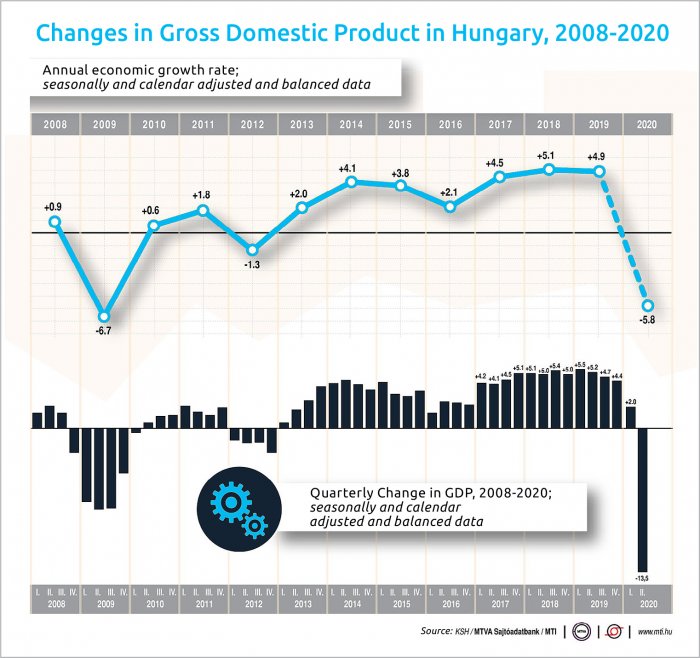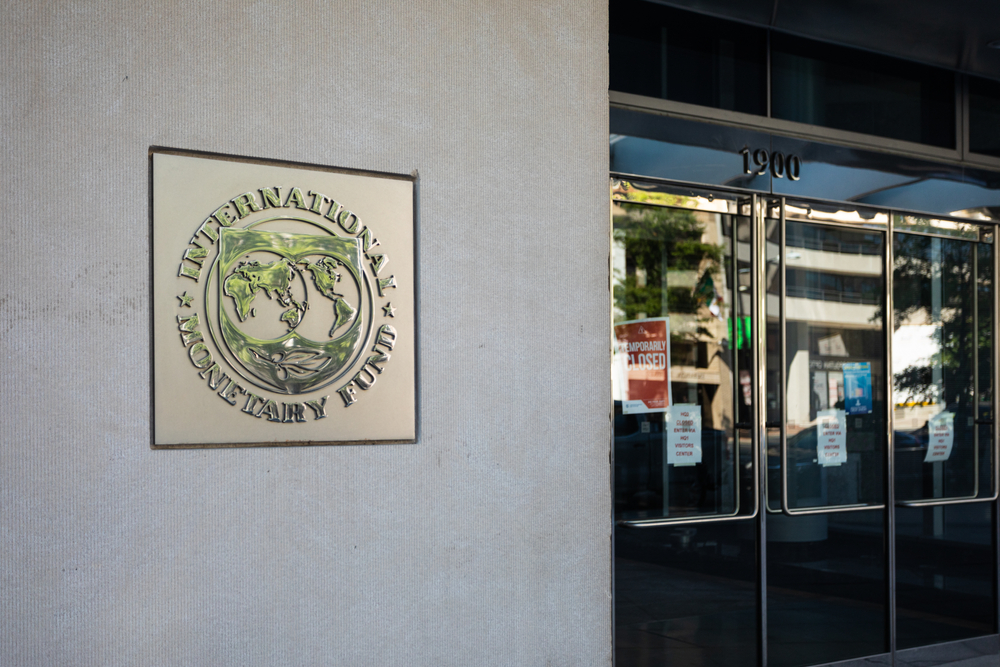Virus Leads to Drastic Fall in GDP

Each segment of the Hungarian economy has suffered from the negative effects of the novel coronavirus pandemic. As a result, the second quarter of the year saw an unprecedented GDP decline. Analysts are cautiously optimistic though; they foresee a faster than expected recovery, and think that third quarter data will underscore their expectations.
The reality was even worse than our worst expectations: this is how one bank economist described the reaction to Hungary’s second quarter GDP data. The initial figure was published on August 14 by the Central Statistical Office (KSH), followed by a second estimate on September 1, which is basically unchanged from the first.
Analysts and the government previously expected an approximately 10% decline in the second quarter of the year from the same period in 2019. The number that eventually came out was an even more shocking fall of 13.6%; when adjusted for seasonal and workday effects, GDP declined by 13.5%.
GDP for the first half of the year fell an unadjusted 6.1% and an adjusted 5.8% year-on-year. Quarter-on-quarter, GDP slipped by an adjusted 14.5%. In a statement published after the data was released, the Ministry of Finance pointed to the unprecedented impact of the coronavirus crisis on the economic performance of European Union member states, and noted that economic contraction in Hungary was smaller than the 14.4% average decline for the EU in Q2; the seasonally adjusted data for the EU was 14.1%, according to the bloc-wide statistical body Eurostat.
While that is true, however, compared to its neighboring countries, Hungary underperformed its peers: in Slovakia, the second quarter GDP fall back by 12.1% on a yearly basis, while it declined by 10.7 in the Czech Republic and 7.9% in Poland.
‘Exemplary’
Minister of Finance Mihály Varga said that government measures to shield the economy from pandemic fallout and support a speedy recovery are the equivalent of about 20% of GDP, an “exemplary scale” in the EU.
“The goal is for the Hungarian economy to return to its pre-crisis path as soon as possible and to achieve again growth of around 5% next year,” the ministry said.
Although analysts expected a two-digit setback, the 13.6% decline took many of them by surprise.
The Hungarian economy had basically fallen back to its Q2 2016 level, said Takarékbank analyst Gergely Suppan. However, he drew attention to the fact that after lifting the restrictions and with the restart of car manufacturing, the economy had showed a sharp jump from the middle of the second quarter, which will, according to the analyst’s expectations, show up in the Q3 GDP data. Suppan said the bank had lowered its forecast for the decline in GDP this year to 3.9%. Takarékbank sees a rebound to 7.2% growth in 2021, he added.
Like Suppan, Gábor Regős of the generally pro-Fidesz economic research institute Századvég thinks that the Hungarian economy will show signs of recovery in the third quarter of the year; unless, that is, severe restrictions are re-introduced. However, he believes the GDP data will still be in the negative range in the third quarter of the year, meaning the setback might be around 4-5% for the full year, he said.
As for the second quarter, he noted that the most impacted sectors were, besides tourism, the entertainment sector and industry, but the virus had a notable negative effect on logistics services as well.
ING Bank chief analyst Péter Virovácz said the bank had scaled down its projection for this year’s economic contraction to a range between 5.5% and 7.5%. Next year, the economy could grow in the 3-5% range, he added.
Worst on Record
“This data is the worst on record by a high margin. It makes it official that Hungary is going through a technical recession. Local economists were more pessimistic than the Bloomberg consensus, but even locals were surprised by this dip,” he wrote on the website think.ing.com.
He added that the recovery will slow as the temporary economic policy measures are coming to an end (e.g. short-term work schemes, tax relief) and economic reality will catch up, notably in the labor market.
“All in all, we still can end up with “only” a 5.5% GDP drop in 2020 as a whole. If targeted lockdown measures slow the rebound (but still not a full second wave with a full lockdown), we see GDP falling by around 7.5% this year. Anyhow, it will take at least two to three years to see Hungarian economic activity reach pre-crisis levels,” Virovácz wrote.
Also, as the economy performed worse than expected and because economy protection expenditures will be required, this year the government is expecting a deficit of the budget higher than projected earlier, the finance ministry announced at the end of August.
The deficit of the budget to GDP could be somewhere between 7% and 9%. The slowing economy and tax relief measures introduced to ease the burdens of the coronavirus pandemic resulted in a sharp decline in the yearly income of the central budget: more than HUF 1.4 trillion is missing from the budget, according to cautious estimates.
Numbers to Watch in the Coming Weeks
The Central Statistical Office will release data on July’s industrial production today (September 4); it should be a good indicator for the third quarter performance of the Hungarian economy. Consumer prices for August will be out on September 9.
SUPPORT THE BUDAPEST BUSINESS JOURNAL
Producing journalism that is worthy of the name is a costly business. For 27 years, the publishers, editors and reporters of the Budapest Business Journal have striven to bring you business news that works, information that you can trust, that is factual, accurate and presented without fear or favor.
Newspaper organizations across the globe have struggled to find a business model that allows them to continue to excel, without compromising their ability to perform. Most recently, some have experimented with the idea of involving their most important stakeholders, their readers.
We would like to offer that same opportunity to our readers. We would like to invite you to help us deliver the quality business journalism you require. Hit our Support the BBJ button and you can choose the how much and how often you send us your contributions.









